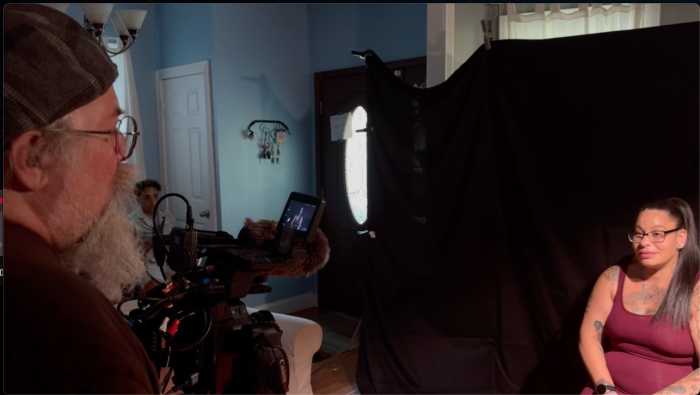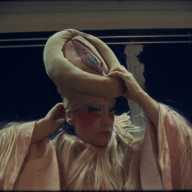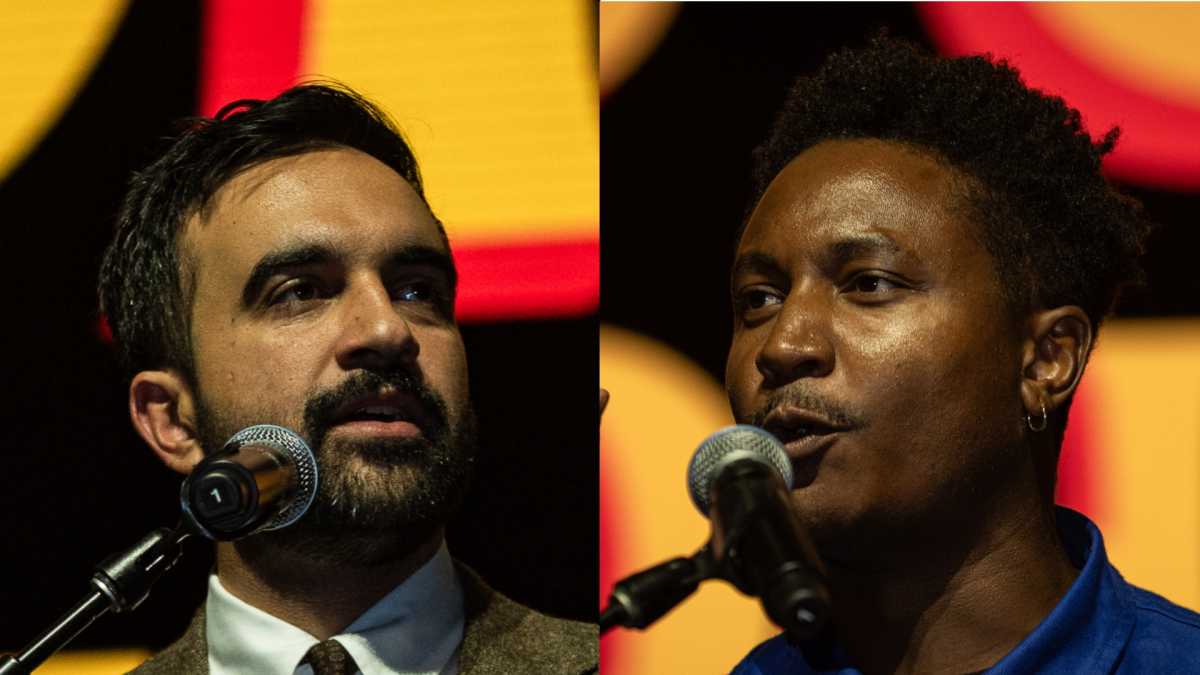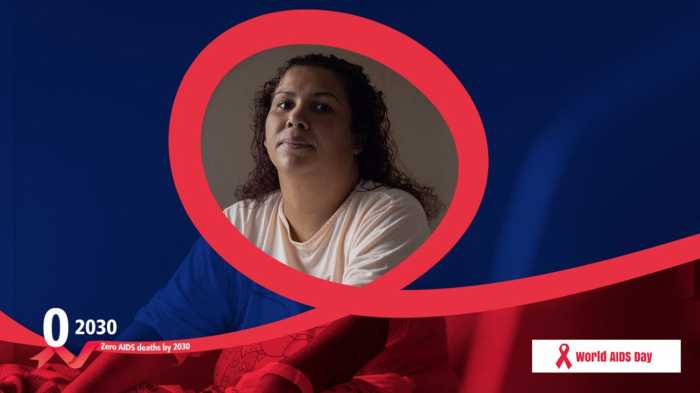“Cactus Pears” (“Sabar Binda”) is a tender gay romantic drama by out gay writer/director Rohan Kanawade about Anand (Bhushaan Manoj), who returns to his family’s village to participate in a 10-day mourning ritual after his father’s passing. He reconnects with Balya (Suraaj Suman), a local farmer, who, like Anand, is unmarried. While Anand’s mother, Sunan (Jayshri Jagtap), is aware of the reason why her son is single (he is gay), Balya is closeted and being pressured by his parents to marry.
Many scenes in “Cactus Pears” depict the intimacy that develops between Anand and Balya as they spend time together, taking goats out grazing, going for a swim, or talking. “Cactus Pears” pivots on whether Balya will leave the village and go live with Anand in Mumbai, or whether each man will experience heartbreak. This beautifully made and well-acted film teases out the answer with a slow burn, but it is emotionally very affecting.
Kanawade spoke with Gay City News about “Cactus Pears,” which won the World Cinema Grand Jury Prize at the Sundance Film Festival earlier this year.

What inspired you to tell this story? Is this autobiographical?
It was not autobiographical, but it is inspired by my experience. In 2016, my father passed away and I went to my mother’s village for the 10-day grieving period. When I was there, I went through a similar marriage pressure that Anand goes through in the film. I could not tell my extended family the reason why I am not married, but my father and my mother knew. I was not sure how my extended family would respond [to my being gay] and I didn’t want to upset them at that time. I am not close to my extended family in the village, but my mother is, and I didn’t want to create any problems for her. When I was there, I was seeking escape from the house. I had this thought — what if I had a friend in this village? I would sneak out with him and away from this pressure [to get married]. I added a romance because I did not want to make a sad film.
You shoot very deliberately, with long takes and blackouts that allow viewers to absorb the action. What decisions did you make about telling the story?
Time feels slow in the village. When I was grieving my father, time moves even more slowly. I wanted to imitate that time in the village. That allowed us to add silence and pauses between dialogue. It a tender film. It has to be slowed down. I had one camera angle for most sequences, and I filmed wide shots. I didn’t want to be closed in on Anand. I wanted to show the other lives around him. I think surroundings are important to create an authentic world. I like long takes to make the audience feel the time. It was also interesting for actors to play out the scenes in one long take. I wanted to see how long I could stretch the sequences.
Can you talk about depicting homosexuality in “Cactus Pears”?
We often see one side of this story — the struggle and no acceptance. You don’t see the positive aspect because drama comes from struggle. When you show an illiterate mother accepts her [gay] son, that is normalizing [homosexuality]. My father and mother accepted me without any drama. I have seen so many friends who come from low economic strata being accepted by their families. I wanted to use that positive experience that I and others had to create something that shows this is so normal and natural. I wanted to show that there is acceptance even in lower economic strata of society. Some kid out there struggling to tell his or her parents might see this and get the courage to come out. If parents are struggling to accept their kids, they can see this film and it can open their minds.
Hair was a critical symbol in the film. Can you discuss using this metaphor in “Cactus Pears”?
Touching someone’s head is not only sensual, but it shows care. When my mother or father run their hand through my hair, it makes me feel loved. I saw my partner’s mother do that all the time. When his mother touches him on the head, it makes him calm. When we are together in bed, I run my hand through his hair. In the film, when Bayla touches Anand’s hair it makes him feel peace. That’s why I used it instead of showing the characters touch elsewhere.
The intimacy between Anand and Balya is very subtle. Why did you include the brief nudity, which is generally not seen in Indian cinema?
If you see most Indian films, they always show toxic masculinity. But not all men are like that. Men share that tenderness as well and can be loving to each other. We generally don’t see that. I wanted to show two men can be in each other’s arms without clothes and be comfortable. I didn’t want to show sex; I wanted to show the moment after, because of the emotional connection and physical intimacy between two men without shying away from showing nudity.
Were there risks for you and/or the actors to make this film?
That was never the problem for me. I was not worried about the fact that this film would show nudity or two men falling in love. My worry was the vision of the film — the long takes, no music, featuring theatre actors we have not seen before on screen. That was the difficult part to achieve that vision, not the content. The nudity or the idea that two men fall in love was difficult for most actors. I told my casting director that there would be a kiss and frontal nudity shot. If the actors are prepared for that, they should come to audition. Casting took three years. Those who turned up understood the needs of the story and that it was not going to sensationalize nudity or gay romance. It was going to show love in a more tender and authentic and grounded way. I could show them how we’d shoot it. And they were OK to do it.
Has the film faced censorship issues in India because of the content?
The film released in India in September. The censor board asked us to mute some abusive words, so I knew they would not accept the frontal nudity. I also knew if that doesn’t happen, I would zoom in, so no genitals were visible. We had to do that, and those who saw the uncensored version said they were mesmerized by how beautifully it is shot. Some were upset that the shot is censored. You don’t see such a moment often. They were surprised, in a good way, by how I told the story. It is not a typical approach. Maybe this film will change the storytelling in Indian cinema. They didn’t find it controversial.
There are filmmakers who sensationalize these things, and that is when the controversy happens. I didn’t want to do that. I wanted to present this story and character and nudity and kissing scene as normal and raw as possible. That is why it is not shocking.
Can you describe what a cactus pear tastes like?
I tasted the fruit only during the shoot. My mother used to talk about this fruit from her village during our summer vacations in her village. But the fruit comes in winter. I only saw it in 2020 when I was writing the script. I tasted it during the shooting of the cactus pear sequence. It is actually neutral. You think cactus, and you think of bitterness. But it doesn’t have the bitterness, which is why people say it’s sweet, but it’s not really sweet, it’s neutral.
“Cactus Pears” | Directed by Rohan Kanawade | Opening November 21 at the IFC Center | Distributed by Strand Releasing




































